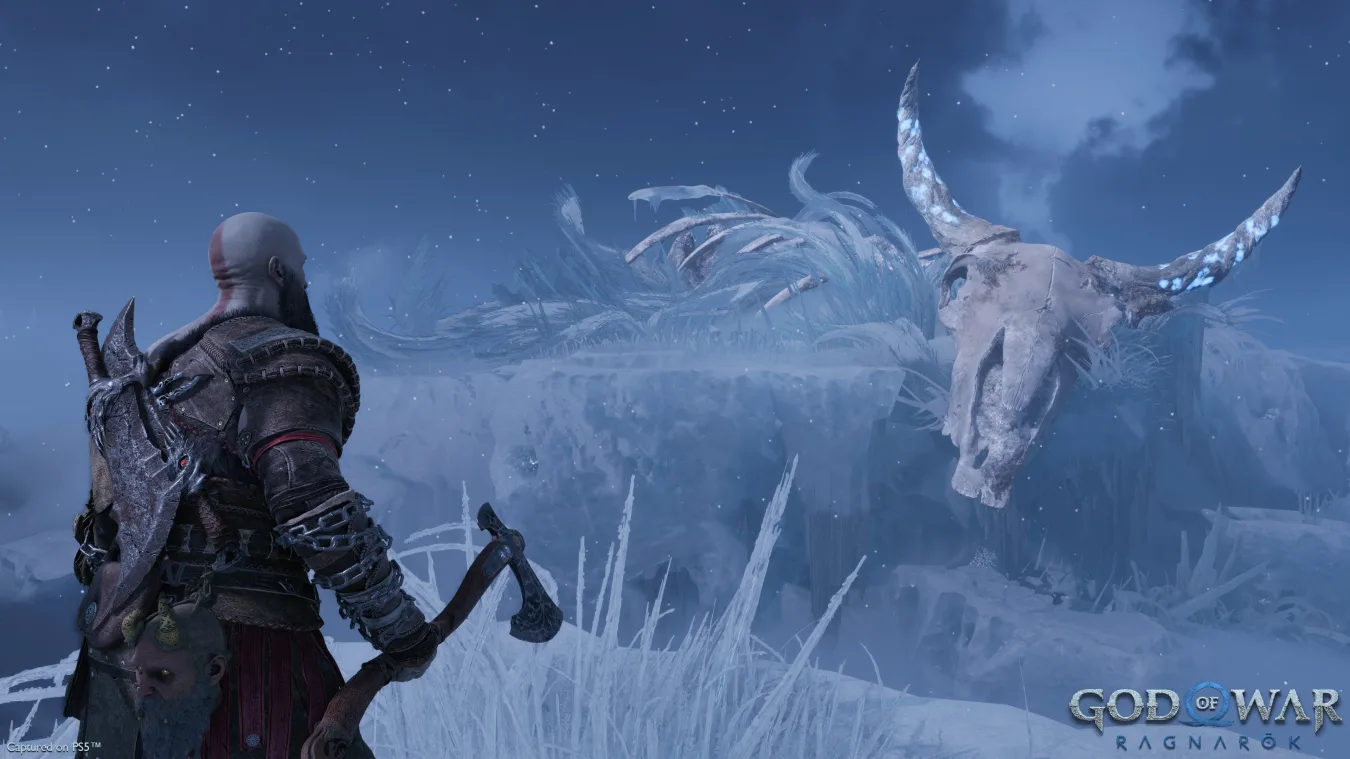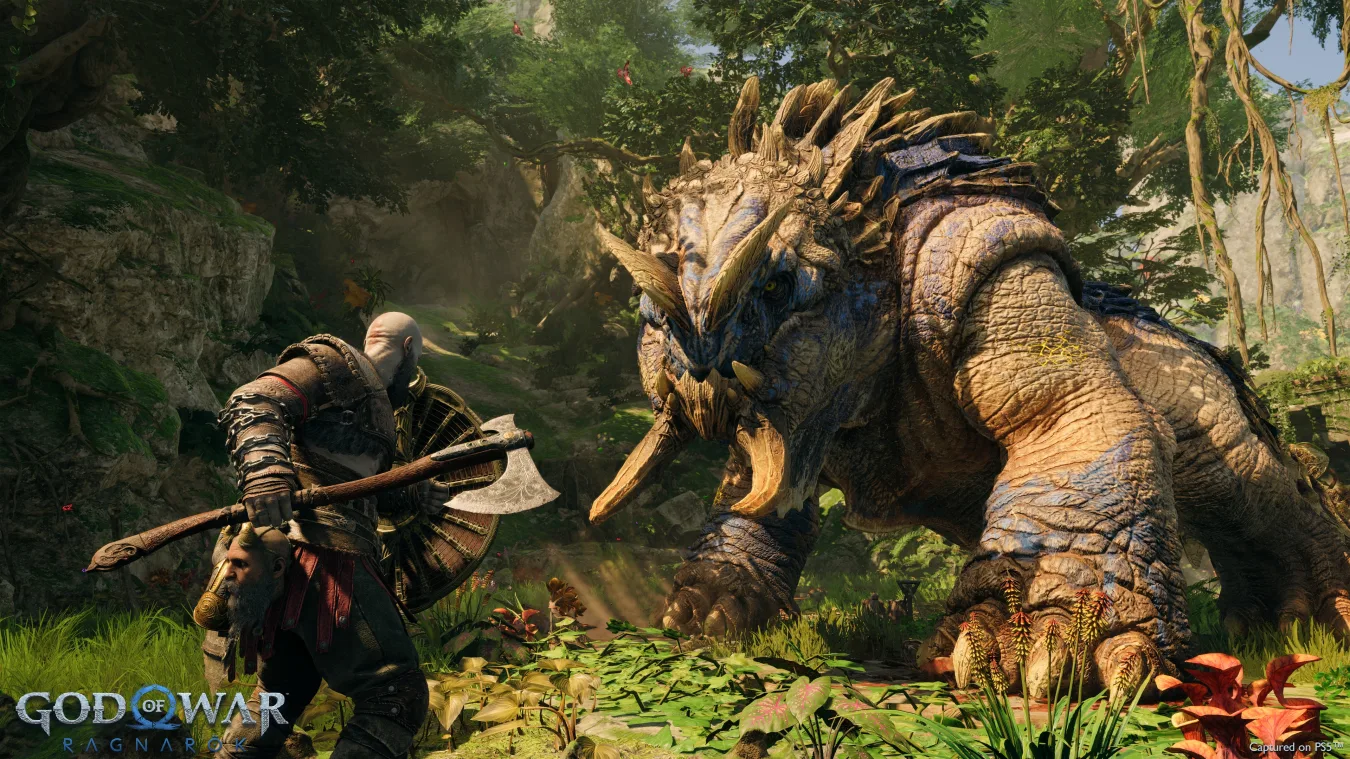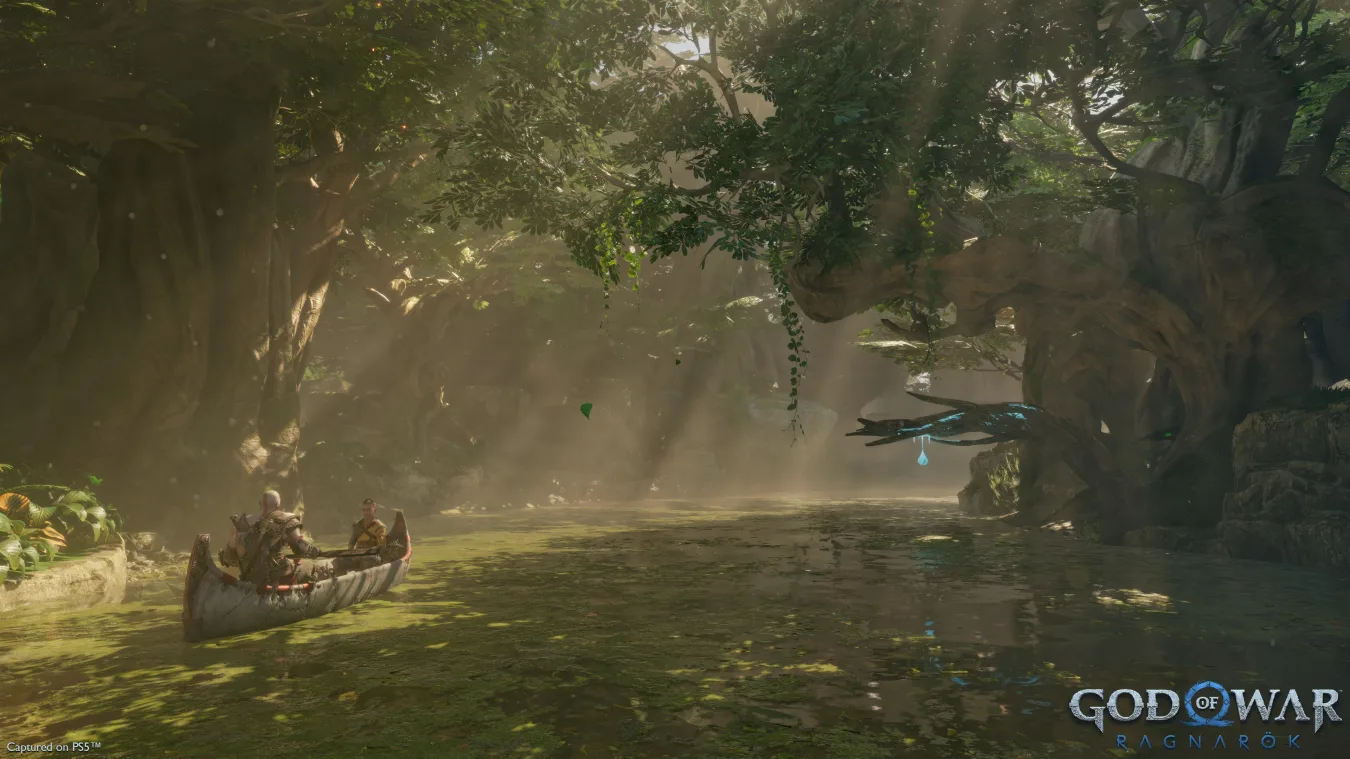This story contains extensive spoilers for the 2018 game ‘God of War’ and light spoilers for ‘God of War: Ragnarok’.
The God of War series has thrown nearly everything you can imagine at its protagonist Kratos since the first installment arrived way back in 2005. He’s ridden giants up Mount Olympus, murdered the pantheon of Greek gods, come back to life from the underworld (several times) and, in 2018’s reinvention of the series, dealt with an unruly pre-teen who just learned he was a god. But God of War: Ragnarok, which arrives tomorrow for the PS4 and PS5, manages to add to that impressive list. It throws Kratos and his companions in the middle of a full-on war, the kind of battle that calls to mind epic cinematic showdowns like the climax of Lord of the Rings: Return of the King or Avengers: Endgame.
But I’m getting a little bit ahead of myself. God of War: Ragnarok is the direct sequel to God of War, which saw a semi-reformed Kratos and his son Atreus try to carry out his wife’s final wish. Along the way, they inevitably caught the attention of the Norse pantheon of gods, which led to Kratos killing the deity Baldur. Kratos meant to save Baldur’s mother Freya from death, but he instead turned Freya into against Kratos and Atreus and also brought about Fimbulwinter, a years-long winter that is the precursor to Ragnarok, which it is said will bring about the end of the nine realms.
Got all that? Clearly, you won’t want to play Ragnarok without playing the 2018 God of War first, because you’ll be missing a lot of backstory. Assuming you are caught up, you’ll feel right at home in Ragnarok. The game quickly and clearly lays out the enemies and the stakes: Odin, leader of the Norse gods, knows Ragnarok is coming, and wants to work with Atreus and Kratos to try to survive it. Kratos, on the other hand, has a more than healthy distrust of Odin, and isn’t interested in anything besides staying out of the gods’ affairs and helping his son stay safe and prepared for the harsh world they inhabit.

Sony / Santa Monica Studios
Whether by prophecy or their own decisions, Kratos and Atreus unsurprisingly get pulled deeper into the machinations of the gods and begin journeying through the nine realms looking for a solution to the potential world destruction that is now at their doorstep. From a gameplay perspective, that means a lot of the familiar combat that Santa Monica Studio introduced in 2018’s God of War. Kratos is again equipped with his Leviathan Axe and Blades of Chaos, and they remain a formidable and extremely fun pair of weapons to use on the many mythical beasts Ragnarok throws at you. Throwing the Leviathan Axe with the PS5’s DualSense controller and magically calling it back to you remains one of the most satisfying moves I can think of in all of gaming.
As before, the game starts you out with a powerful but relatively basic set of moves and you can add to that arsenal by upgrading your weapons, finding powerful runic attacks for each weapon, crafting new armor and magical items and unlocking new skills in the game’s fairly complicated upgrade trees. As in the 2018 title, there are a dizzying array of moves you can unlock, as well as a treasure trove of armor, all of which affects Kratos’ stats. It can be overwhelming, but I also found that I didn’t need to think too hard about it, at least on the difficulty level I was playing on. If you play on the harder settings, though, you’re going to need to spend a lot of time doing side quests to get the resources you need so you can constantly optimize your gear.
Regardless of the over-abundance of customization, going into battle as Kratos remains extremely satisfying. Whether you’re fighting a massive swarm of enemies or focusing your efforts on a massive, ultra-powerful beast, there’s a level of fluidity to the combat that makes the player feel, quite simply, god-like. It takes a while to upgrade Kratos and figure out what style of play works best for you, but sometimes you can get into a flow state of total destruction that is a delight.
One of the complaints I had about 2018’s God of War was that, while the combat was great, the variety of enemies was lacking compared to earlier games. Santa Monica Studio seems to have taken this to heart and mixed things up significantly in Ragnarok.There are a greater variety of basic enemies, though undead soldiers remain the game’s bread and butter. But those armies have some tricky new powers this time, including the ability to hit Kratos with a multi-colored “bifrost” blast — while you’re in that state, a single hit explodes that bifrost and significantly reduces your health. There are also new small and agile enemies that I think of as puppet masters; they keep reviving and healing the ordinary soldiers, so unless you track them down and dispose of them quickly, you’re in for a rough fight.

Sony / Santa Monica Studios
More significant are the variety of bosses in Ragnarok. In God of War, the larger battles mostly consisted of a few different types of trolls and ogres along with some elemental, but that is most definitely not the case this time. I took down a massive realm-shifting serpent, a building-sized wolf rampaging through Hel, and that’s not even mentioning the inevitable battles against the Norse gods.
Once again, the nine realms Kratos and Atreus travel through are simply stunning. Ragnarok, like some other recent PS5 games, has both “favor performance” and “favor visuals” modes. The default performance mode runs at a locked 60 frames per second and scales the resolution between 1440p and 4K. Favor visuals instead locks the frame rate at 30 fps and delivers native 4K graphics. There are also a variety of options if you have a HFR TV; Polygon did a great job of breaking down the technical details here.

Sony / Santa Monica Studios
Whether in performance or fidelity mode, God of War: Ragnarok looks beautiful. The snowy vistas and frozen lake of Midgard put a chill in my bones, and the lush and swampy confines of Vanaheim were real enough to make me want to sweat from the humidity. All of the character models, from Krato and Atreus down to minor characters you only meet a few times, are equally well-rendered — Kratos in particular is more detailed than ever, with his scars, beard, world-weary eyes and callused hands showing the hundreds of years and innumerable trials he’s been through.
I would be remiss not to mention the incredible skill and performances from Ragnarok’s cast. Returning actors Christopher Judge (Kratos), Sunny Suljic (Atreus) and Alastair Duncan (Mimir) reprise their excellent performances and have a wonderful rapport throughout their extensive time together in this game. Danielle Bisutti, meanwhile, takes her performance as a grief-obsessed, revenge-driven Freya to new levels of desperation in this installment.